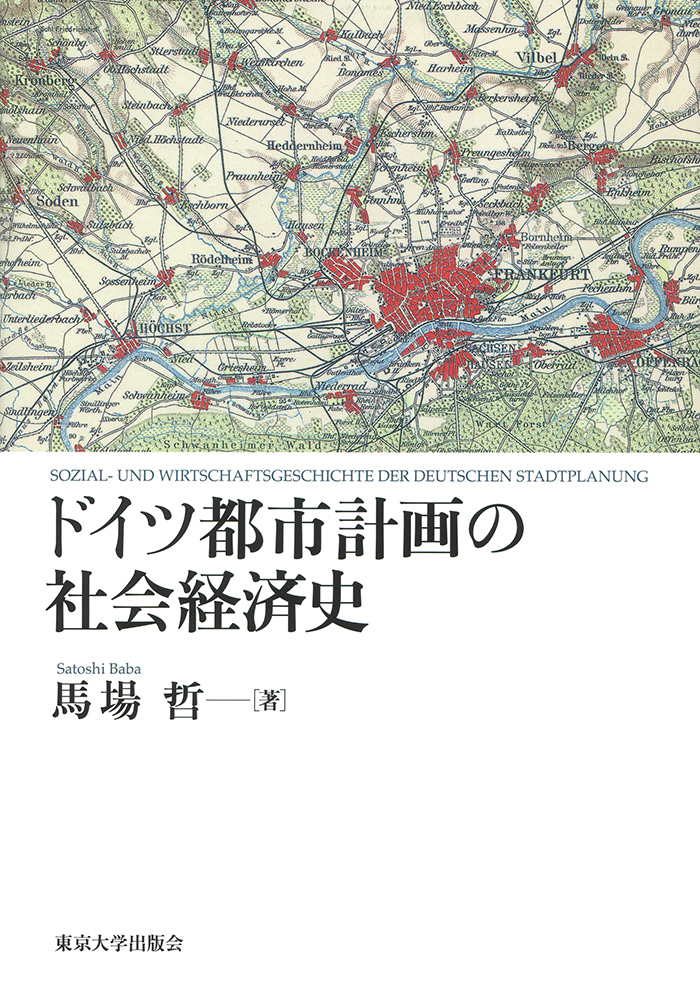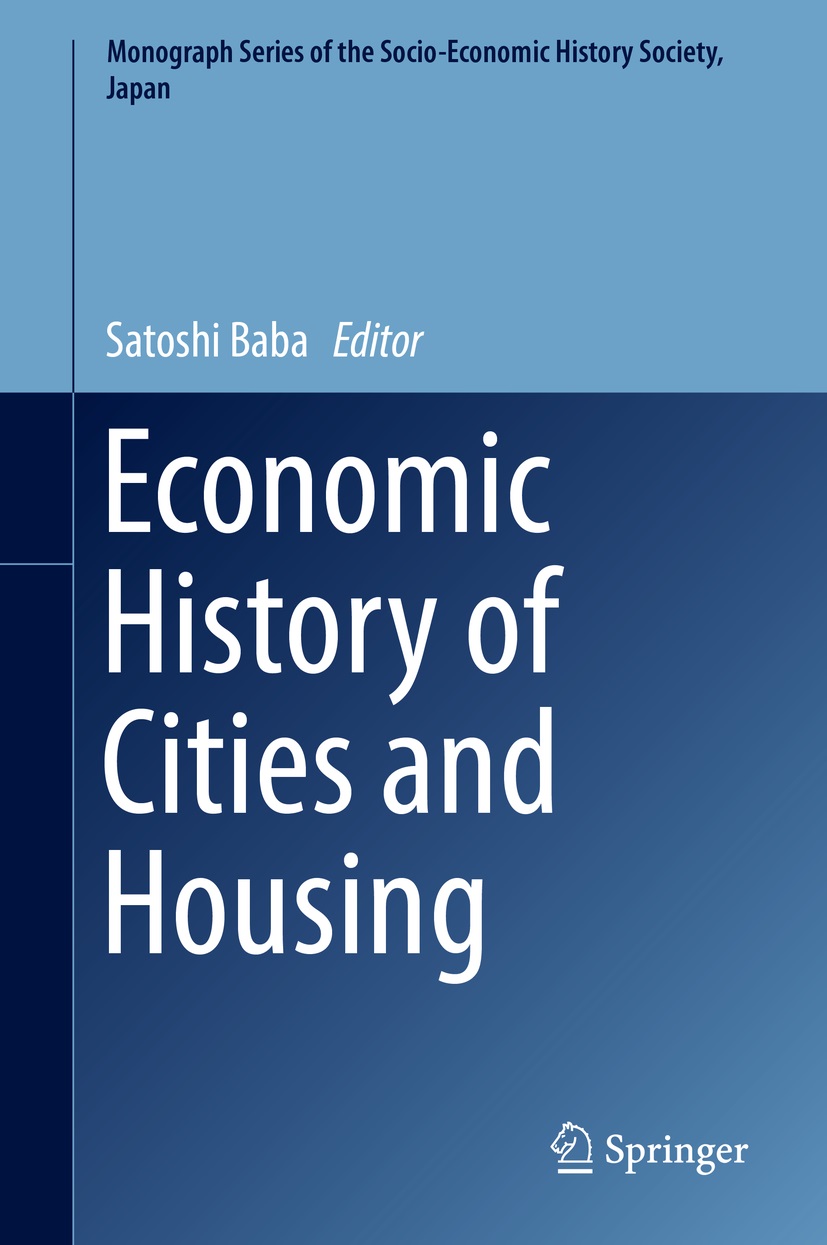
Title
Doitsu Toshikeikaku no Syakaikeizaishi (Socioeconomic History of German City Planning)
Size
422 pages, A5 format
Language
Japanese
Released
March 30, 2016
ISBN
978-4-13-046117-7
Published by
University of Tokyo Press
Book Info
See Book Availability at Library
Japanese Page
Urbanization progressed in Germany in line with industrialization since the beginning of the nineteenth century, and modern cities distinct from premodern cities were established in Germany in the latter half of the same century. This book discusses this process throughout the period 1870–1920 using Frankfurt am Main as the primary example, while retaining an overall view of Germany.
This book consists of four parts. Part 1 presents the research history and the topics discussed in this book. Chapter 1 outlines the modern urban history of Germany and surveys research in this field in Germany and Japan. Chapter 2 presents the discussion points that become the pillar of this book’s topics while connecting them to previous research on modern urban history in Germany.
In Part 2, urban policy during the period of establishment of German modern city and the characteristics of urbanization and industrialization are examined using the case of Frankfurt. The focus of Chapter 3 is on Franz Adickes, his career in urban bureaucracy, various policies he implemented, and the philosophy that supported these policies. He was not only Frankfurt’s senior mayor but also a representative one in the Second Imperial Germany. Chapter 4 describes how Frankfurt, which has developed as a commercial and financial city since the Middle Ages, implemented municipal expansion five times between 1877 and 1928 to incorporate contiguous municipalities where industrial development had begun. By way of a series of expansions Frankfurt assumed the characteristics of an industrial city as well.
In Part 3, the significance of various policies related to the broader sense of town planning in terms of social policy is examined using Frankfurt as a case study. Chapter 5 clarifies the process by which “social policy” fares were introduced following a revision of the urban public transportation fare system after municipalization and electrification at the turn of the twentieth century, keeping in mind the concept of “Daseinsvorsorge.” Chapter 6 elucidates land policies implemented in German cities at the turn of the twentieth century as aiming to create preconditions for town planning in a broad sense. In addition to that it presents the implementation process, achievements, and limitations with reference to the transition from “social city” to “social state” during and after the World War I. Chapter 7 focuses on Frankfurt’s charity organizations, which were important players in charity and poor relief since the Middle Ages. As they possessed vast amounts of land, Frankfurt’s municipal authority strengthened supervision of charity organizations in the nineteenth century and these lands were used for the construction of modern Frankfurt.
Part 4 examines how German urban administration and policies were recognized in England and how they were introduced. Chapter 8 discusses the thought and activities of T. C. Horsfall, a philanthropist in Manchester. He held German urban administration and policies in high esteem and argued for their introduction in England while also becoming a leading player in the British housing reform and town planning movement. Chapter 9 deals with the thought and activities of J. S. Nettlefold, a Town Councilor in Birmingham. He developed an argument against municipal housing into an urban planning theory incorporating German land purchasing and boundary expansion policies, and he joined the town planning movement seeking national legislation.
(Written by BABA Satoshi, Professor, Graduate School of Economics / 2018)



 Find a book
Find a book






